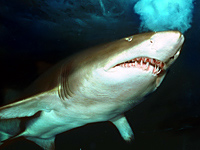American researchers have produced 8 wildcat kittens by cross-breeding cloned adults. This is the first time that clones of a wild species have bred.

This development holds enormous potential for preserving endangered species. “By improving the cloning process and then encouraging cloned animals to breed and make babies, we can revive the genes of individuals who might not be reproductively viable otherwise, and we can save genes from animals in the wild,” commented Dr Betsy Dresser, who led the scientific team at the Audubon Center for Research of Endangered Species.
Not all conservationists believe that cloning has much value in preserving threatened species.
“Cloning does nothing to reduce the most pressing threats to endangered species and their habitats; conservation requires work on entire populations and their habitats,” said Dr Susan Lieberman, Director of WWF‘s Species Programme.
It also has to be shown that the clones could breed normally once re-introduced to the wild.
Via BBC News.
Meanwhile, in Australia…
Although remarkably docile once it is born, the endangered grey nurse shark is its own worst enemy: in a process called intra-uterine cannibalism, its young eat each other in the womb, so scientists at the New South Wales state fisheries department have come up with a plan to breed the embryo sharks in individual test tubes.

With only one embryo pup surviving in each womb, the female shark then produces unfertilized eggs for it to feed on.
Scientists plan to harvest embryos from pregnant female grey nurse sharks in the wild, then raise them in specially built artificial uteri in fisheries laboratories. Bt they must first learn how to create an artificial shark uterus and develop artificial uterine fluids and artificial eggs to feed the shark pups.
Scientists will also have to develop the surgical procedures to harvest embryos from female sharks in the wild and insert the embryos into the artificial uteri. The embryos will be fed artificial shark eggs until they reach birth size and then released into the wild.
“If we do not do this the animal is going down the gurgler (drain),” said biologist Nick Otway. “This animal will not survive on the east coast of Australia unless we can do this.”
Via CNN.
